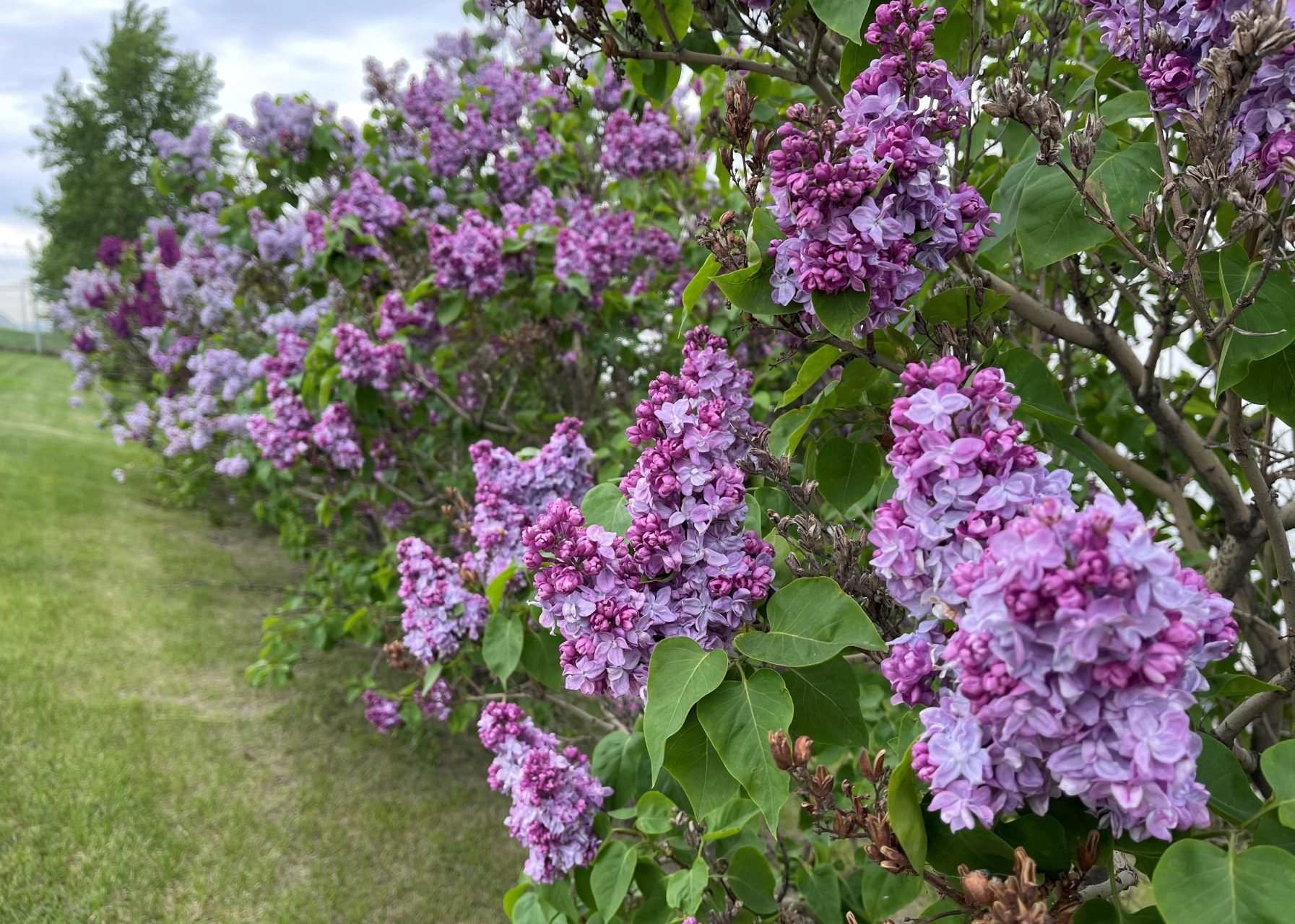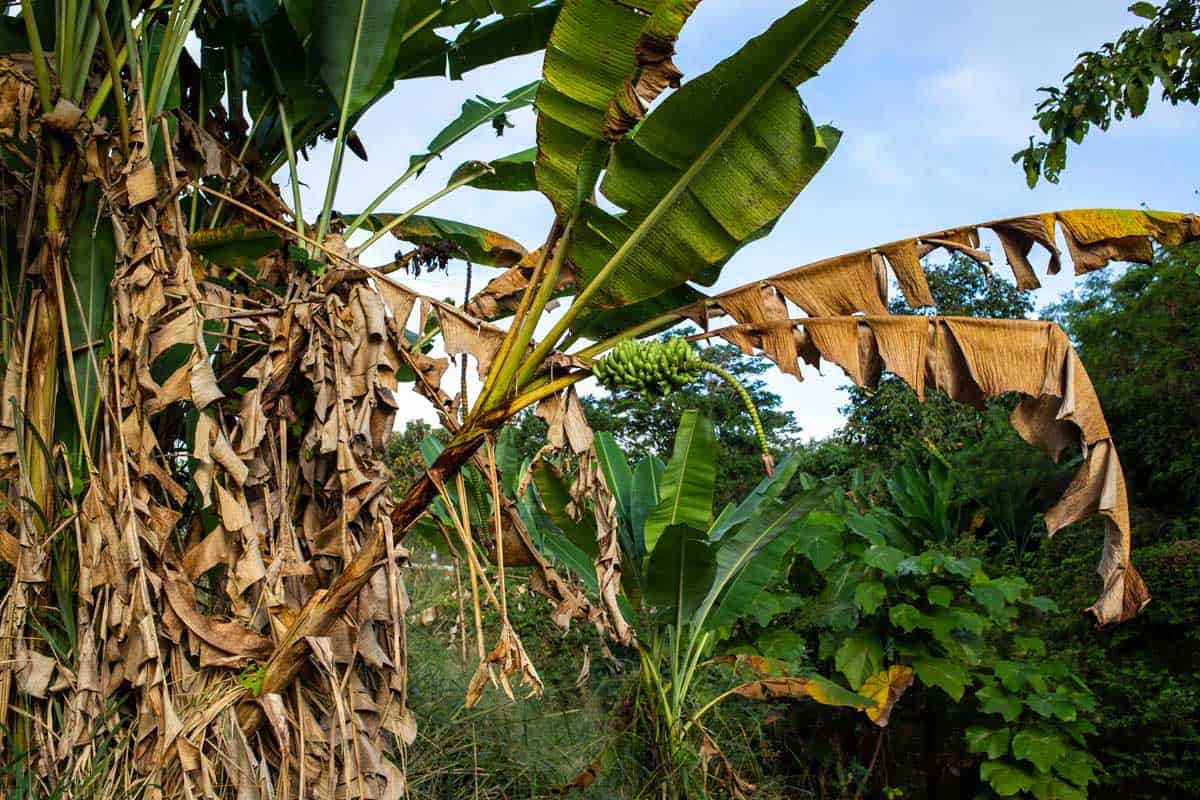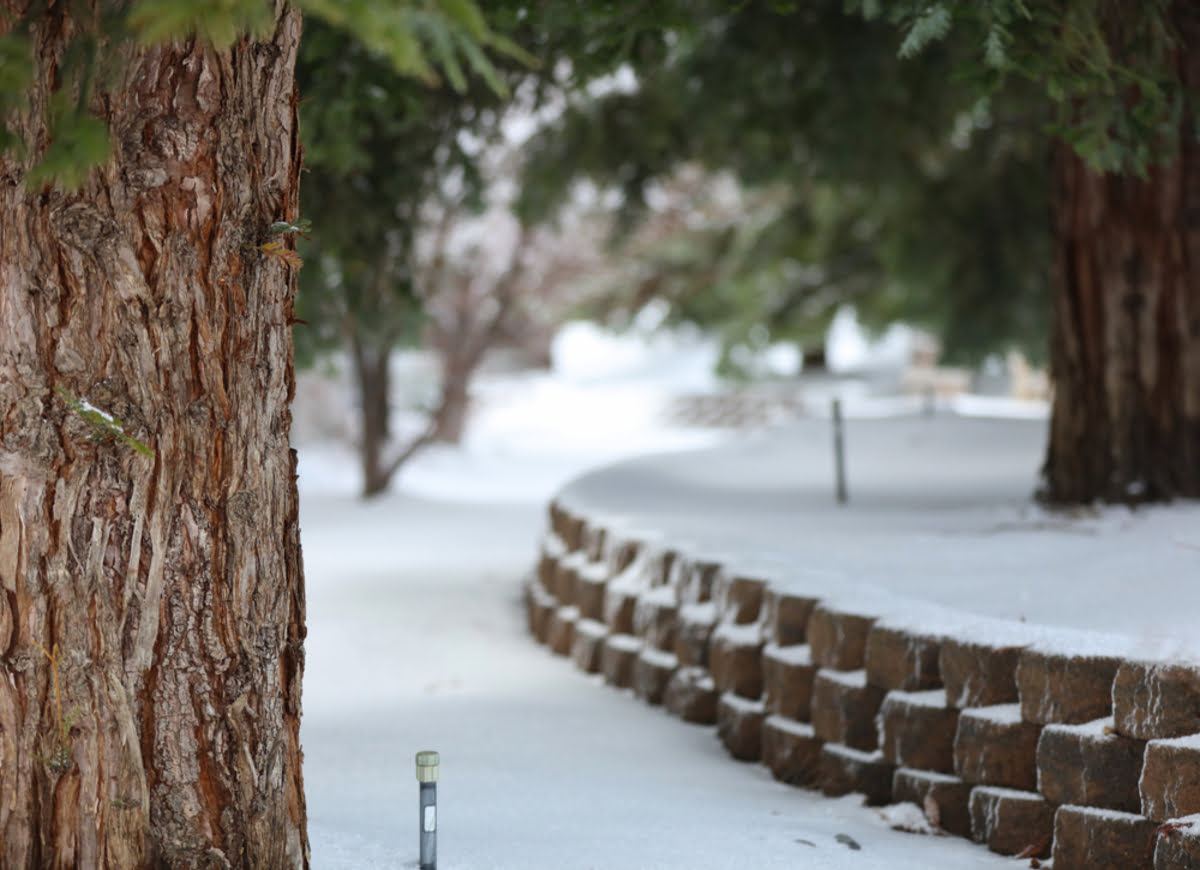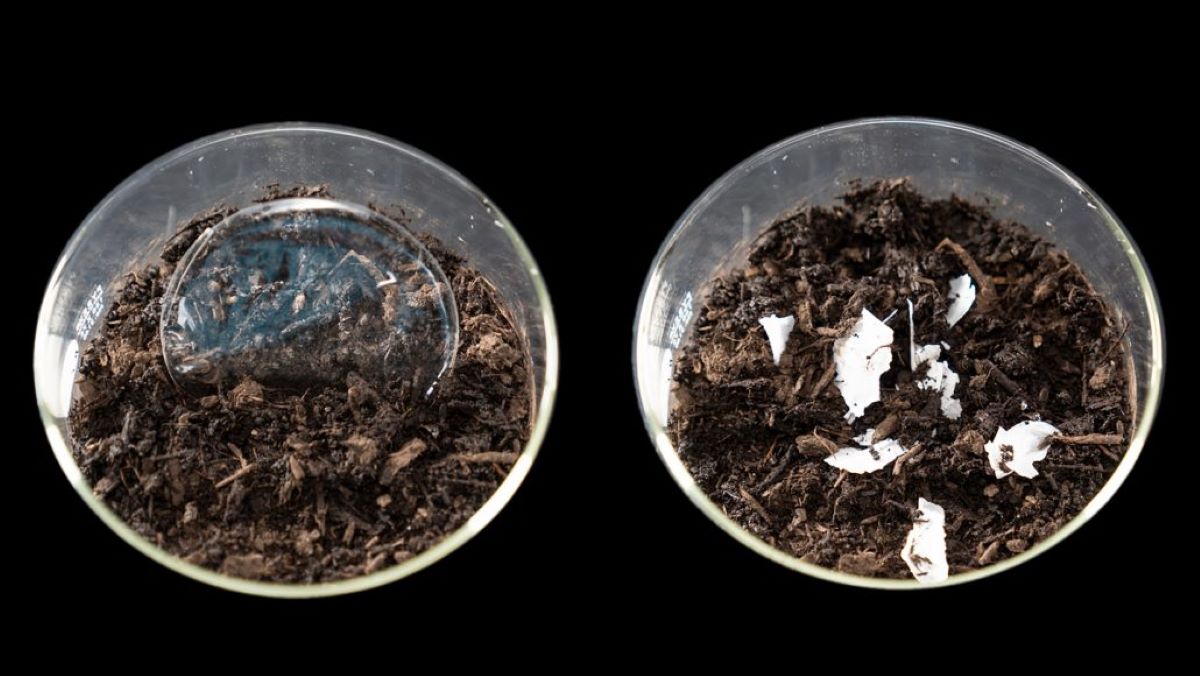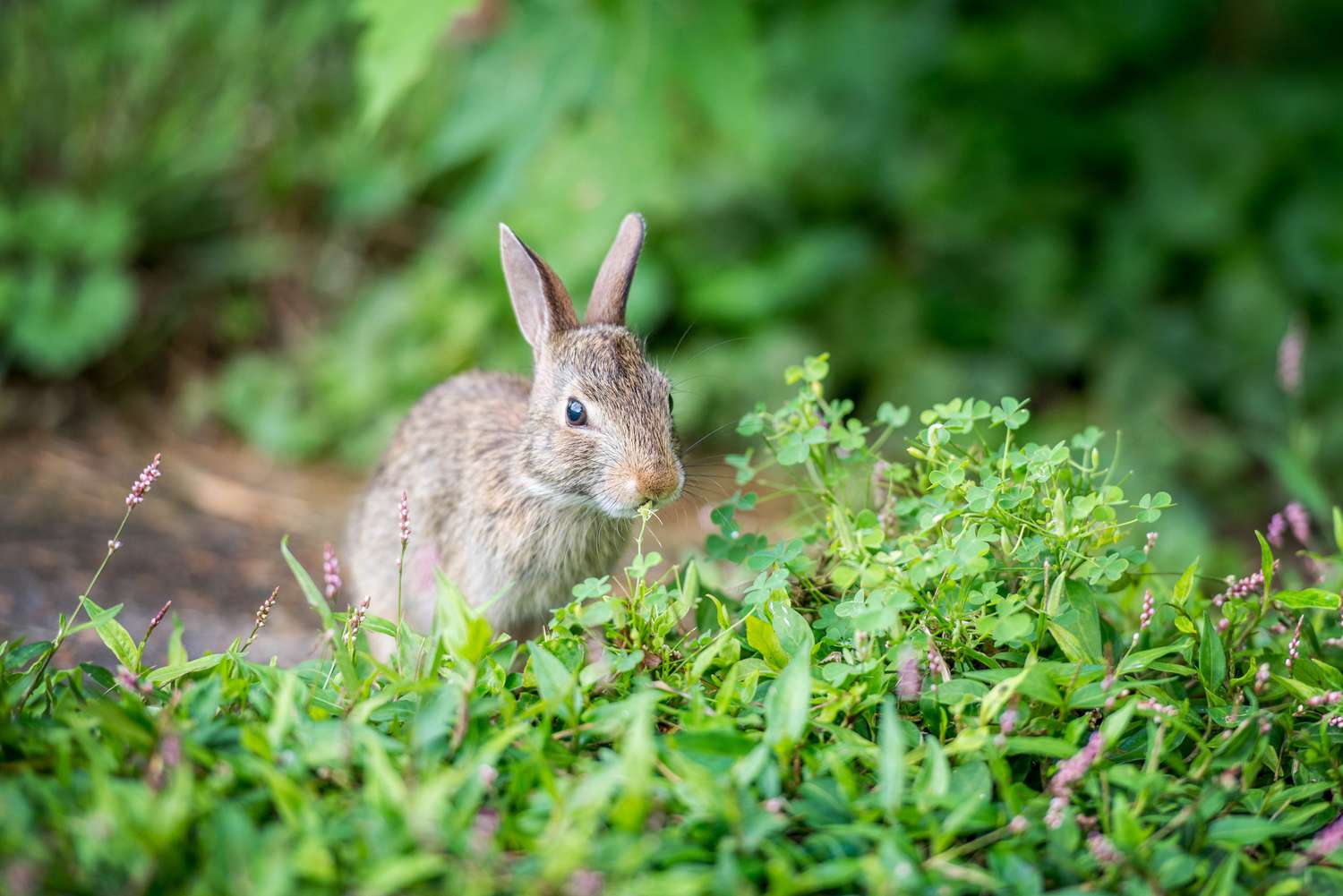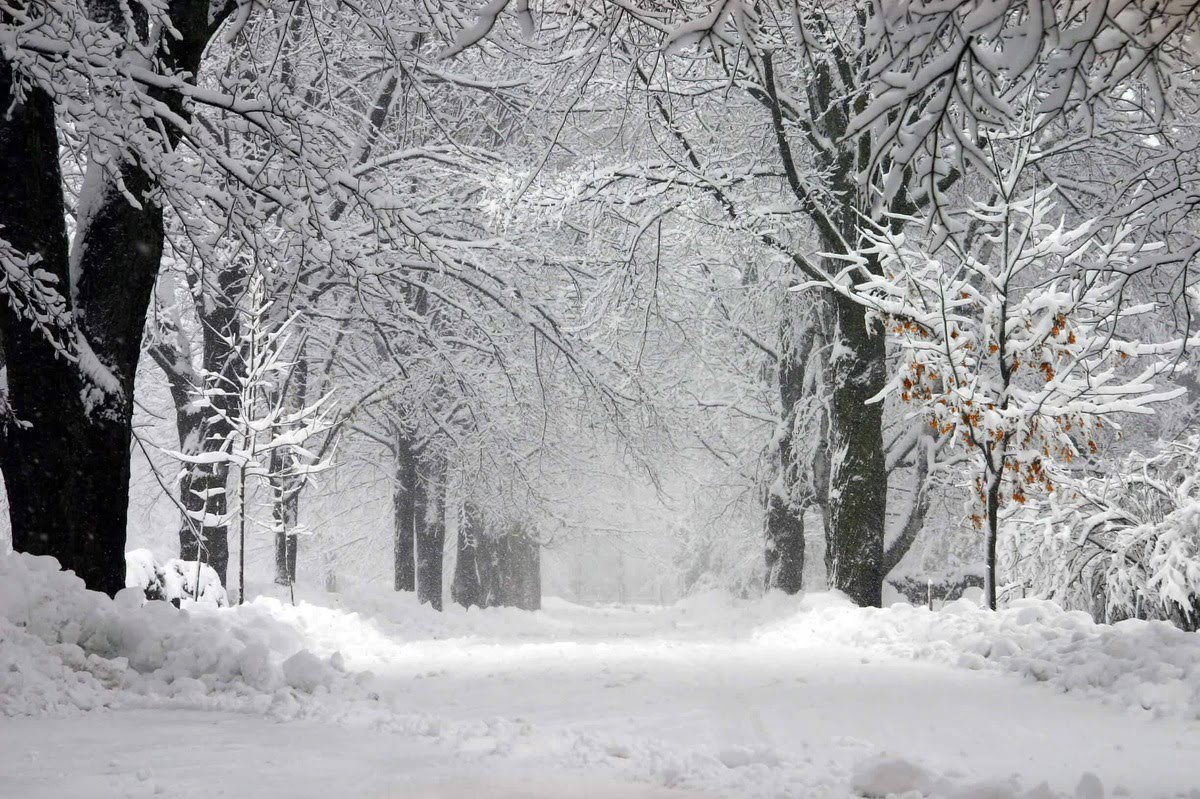Home>Gardening Techniques>How To Compost In Winter
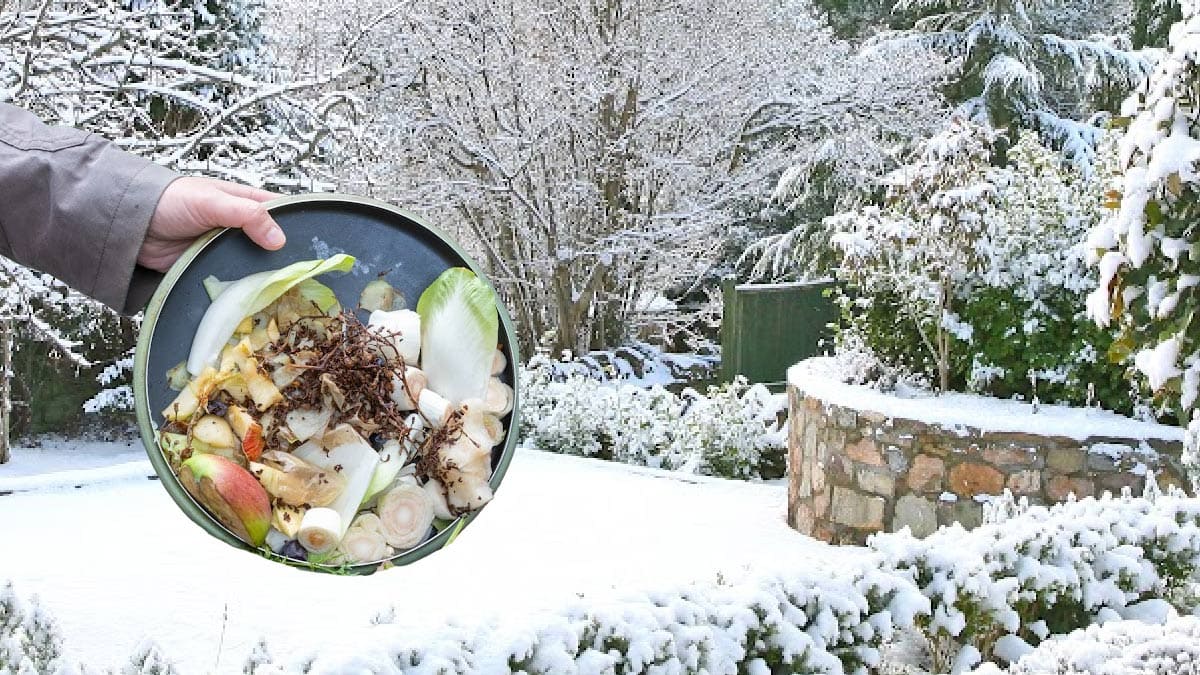

Gardening Techniques
How To Compost In Winter
Modified: January 22, 2024
Learn how to compost in winter for successful seasonal gardening. Discover effective tips and techniques to maintain your compost pile even in colder months.
(Many of the links in this article redirect to a specific reviewed product. Your purchase of these products through affiliate links helps to generate commission for Chicagolandgardening.com, at no extra cost. Learn more)
Table of Contents
- Introduction
- Understanding the Basics of Winter Composting
- Adjusting Your Composting Process for Cold Temperatures
- Choosing the Right Compost Bin for Winter Composting
- Layering Your Compost Pile in Winter
- Managing Moisture and Insulation in Winter Composting
- Adding the Right Materials to Your Winter Compost
- Monitoring and Maintaining Your Winter Compost
- Benefits and Challenges of Composting in Winter
- Conclusion
Introduction
Winter is often seen as a time when gardening activities come to a halt. However, avid gardeners know that even in the colder months, there are ways to continue nurturing the soil and preparing for the upcoming planting season. One such method is winter composting.
Composting is the process of breaking down organic materials into nutrient-rich compost, which can then be used to enhance soil health and promote plant growth. While composting is typically associated with the warmer months, it is indeed possible to continue composting during winter.
In this article, we will explore the world of winter composting and provide you with the necessary knowledge to successfully maintain your compost pile during the colder months. We will cover the basics of winter composting, including adjusting your composting process, choosing the right compost bin, layering your compost pile, managing moisture and insulation, adding the right materials, and monitoring and maintaining your winter compost. Additionally, we will discuss the benefits and challenges of composting in winter.
By learning how to compost in winter, you can reduce waste, enrich your soil, and prepare for a thriving garden once spring arrives. So, grab your gloves and let’s dive into the fascinating world of winter composting!
Understanding the Basics of Winter Composting
Composting is the process of breaking down organic matter, such as kitchen scraps, yard waste, and plant materials, into nutrient-rich soil amendment called compost. It is a natural and sustainable way to recycle organic waste and improve soil quality. While composting is often associated with warm weather, the process can be continued during the winter months with a few adjustments.
One important factor to consider when winter composting is the temperature. Microorganisms, such as bacteria, fungi, and earthworms, play a crucial role in the decomposition of organic matter. In colder temperatures, the activity of these microorganisms slows down, which can cause the composting process to slow down as well.
To maintain effective composting in winter, it is essential to provide the right conditions for the microorganisms to thrive. This includes protecting the compost pile from extreme cold, maintaining proper moisture levels, and balancing the carbon-to-nitrogen ratio.
Insulating your compost pile can help to trap heat and keep the microorganisms active. You can achieve this by using a compost bin with good insulation properties or by creating a simple structure using straw or hay bales around the pile. Additionally, covering the compost pile with a tarp or thick layer of leaves can provide extra insulation.
Another consideration for winter composting is moisture management. While it’s important to keep the compost pile moist, excessive moisture can lead to anaerobic conditions and a smelly, rotting pile. To avoid this, monitor the moisture levels regularly and add water if necessary. However, be cautious not to overwater, as excessive moisture can also lead to freezing and slowing down the composting process.
Lastly, maintaining a proper carbon-to-nitrogen ratio is crucial for successful winter composting. The ideal ratio is roughly 30 parts carbon to 1 part nitrogen. In winter, it can be challenging to find a good balance as many sources of nitrogen, like green plant materials, may not be readily available. However, you can compensate by adding more carbon-rich materials such as dry leaves, straw, or shredded newspaper.
Understanding the basics of winter composting sets the foundation for a successful composting process even during the colder months. By creating the right conditions for microorganisms, managing moisture levels, and balancing carbon-to-nitrogen ratios, you can continue composting and reap the benefits of nutrient-rich compost for your garden come spring.
Adjusting Your Composting Process for Cold Temperatures
Composting during the winter months requires a few adjustments to accommodate the colder temperatures and slower decomposition. By making these adjustments to your composting process, you can ensure that the organic matter will still break down effectively, albeit at a slower pace.
One key adjustment is to shred or chop the organic materials into smaller pieces. This increases the surface area available for decomposition, allowing the microorganisms to work more efficiently. Smaller pieces also thaw and decompose faster, aiding in the overall composting process.
It’s also beneficial to mix different types of organic materials thoroughly. Combining a variety of ingredients, such as fruit and vegetable scraps, yard waste, and shredded paper, helps maintain a balanced carbon-to-nitrogen ratio and provides the necessary nutrients for decomposition. Mixing the materials also helps distribute heat throughout the compost pile, supporting the activity of the microorganisms.
In colder temperatures, it’s essential to monitor the moisture content of the compost pile carefully. The compost should be moist but not overly wet. Cold weather slows down evaporation, and excess moisture can lead to a compacted, anaerobic environment. Regularly check the moisture levels and adjust by adding water if the compost appears too dry or adding dry materials like leaves or straw to absorb excess moisture.
Another adjustment to consider is the frequency of turning or aerating the compost pile. While frequent turning is beneficial for promoting oxygen circulation and speeding up decomposition, it can introduce cold air into the pile, delaying the composting process. In winter, it’s best to minimize the number of times you turn the pile to preserve heat. However, ensure that the compost remains aerobic by occasionally using a garden fork or aerator tool to create air channels within the pile.
If you have the option, locating your compost pile in a sunny area can provide some additional warmth. The sun’s rays can help heat up the compost pile and support microbial activity. If sunlight is limited, consider insulating the compost bin with straw or leaves to help retain heat.
By adjusting your composting process for cold temperatures, you can continue composting effectively throughout the winter months. Shredding materials, mixing different components, monitoring moisture levels, minimizing turning, and optimizing sunlight exposure or insulation will help maintain the decomposition process and prepare nutrient-rich compost for your garden.
Choosing the Right Compost Bin for Winter Composting
When it comes to winter composting, choosing the right compost bin is essential to ensure successful decomposition and to protect the compost pile from the harsh winter elements. Here are some factors to consider when selecting a compost bin specifically designed for winter composting.
Insulation: Look for a compost bin that provides good insulation to help retain heat. Insulated bins are typically designed with double-walled panels or thick plastic materials that help trap warmth. This insulation prevents the compost pile from freezing and promotes microbial activity even in cold temperatures.
Size and capacity: Consider the size and capacity of the compost bin based on the amount of organic waste generated in your household. A larger bin allows for a more significant volume of compost materials, ensuring a steady supply of organic matter throughout the winter. However, if you have limited space or produce minimal waste, a smaller bin might be sufficient.
Accessibility: Choose a compost bin that provides easy access for adding materials and turning the compost. Look for designs with wide openings, removable panels, or hinged lids to make it convenient to work with the compost pile. Accessibility becomes even more critical during winter when the cold weather may dissuade frequent turning.
Aeration and drainage: Proper aeration and drainage are crucial for maintaining a healthy compost pile. Look for compost bins that have ventilation systems, such as side vents or perforated walls, to promote airflow and prevent stagnant moisture. Additionally, ensure that the bin has sufficient drainage holes or a bottom that allows excess moisture to escape.
Durability: Winter composting often exposes compost bins to harsh weather conditions, such as freezing temperatures, heavy snowfall, and strong winds. Therefore, select a compost bin that is made from durable materials, such as UV-treated and weather-resistant plastic or galvanized steel, to withstand the elements and last for multiple seasons.
Design and aesthetics: While functionality is essential, don’t overlook the design and aesthetics of the compost bin. Choose a bin that complements your outdoor space and meets any specific design preferences you may have. There are various compost bin designs available, including tumblers, stationary bins, and worm composting systems, so you can find one that suits your needs and style.
Ultimately, the right compost bin for winter composting will depend on your specific requirements and available space. Consider insulation, size, accessibility, aeration, durability, and design when selecting a compost bin. By choosing a bin that meets these criteria, you’ll set yourself up for successful winter composting and ensure a steady supply of nutrient-rich compost for your garden.
Layering Your Compost Pile in Winter
Layering your compost pile properly is crucial for efficient decomposition and maintaining a healthy balance of organic materials. This practice becomes even more important during the winter months when the decomposition process naturally slows down. By following a few key principles, you can ensure that your winter compost pile is layered effectively for optimal results.
1. Carbon-to-Nitrogen Ratio: Maintain a balanced carbon-to-nitrogen ratio in your compost pile. This ratio provides the necessary nutrients for microbial activity and decomposition. During winter, it can be challenging to find sources of nitrogen-rich “green” materials, such as fresh grass clippings or kitchen scraps. To compensate, focus on adding more carbon-rich “brown” materials, such as dry leaves, straw, or shredded newspaper. Aim for a ratio of roughly 30 parts carbon to 1 part nitrogen for successful winter composting.
2. Alternating Layers: Alternate between layers of different organic materials to encourage a well-balanced compost pile. Start with a layer of coarse, bulky materials, such as twigs or small branches, to create air channels and promote drainage. Follow with a layer of nitrogen-rich materials, such as kitchen waste or green plant trimmings. Then, add a layer of carbon-rich materials, like dry leaves or shredded newspaper. Repeat this alternating layering pattern until you reach the desired height for your compost pile.
3. Thin Layers: In winter, it’s advisable to keep each layer of organic material relatively thin. Thinner layers allow for better oxygen circulation and prevent the compost pile from becoming too compacted. Aim for a layer thickness of around 4 to 6 inches. Smaller pieces of organic matter, such as shredded leaves or chopped kitchen scraps, can also decompose more quickly, providing a faster overall breakdown of the compost pile.
4. Moisture Control: Pay attention to the moisture content in each layer of your compost pile. The moisture level should be similar to a wrung-out sponge – damp but not sodden. Depending on the weather conditions and the moisture content of the organic materials, you may need to adjust by adding water to dry layers or adding dry, carbon-rich materials to absorb excess moisture. Proper moisture control is essential for the microbial activity and decomposition process.
5. Covering the Pile: To retain heat and insulate the compost pile, consider covering it with a tarp, old carpet, or a thick layer of leaves. Covering the pile helps to preserve warmth and prevent excessive moisture from rain or snow. It also protects the microorganisms and organic matter from harsh winter conditions, allowing them to continue their work in breaking down the materials.
By following these layering principles, you can create a well-structured and properly balanced compost pile for winter composting. Remember to maintain a proper carbon-to-nitrogen ratio, alternate between different organic material layers, keep the layers thin, control moisture levels, and cover the pile as necessary. These practices will help you maintain an active and productive compost pile, even during the colder months.
Managing Moisture and Insulation in Winter Composting
Effective moisture management and insulation are crucial aspects of winter composting. The cold temperatures and reduced microbial activity during winter require careful attention to maintain proper moisture levels and provide insulation for the compost pile. By managing moisture and implementing insulation techniques, you can ensure that your compost pile remains active and continues to break down effectively.
Moisture management is vital to prevent the compost pile from becoming too dry or too wet. While the cold weather slows down evaporation, it’s still essential to maintain a proper moisture balance. Check the moisture content regularly by taking a handful of compost and squeezing it. It should feel damp, like a wrung-out sponge.
If the compost pile is too dry, add water to increase moisture levels. Use a watering can or a hose with a spray attachment to evenly distribute water throughout the pile. Ensure that the water permeates the layers and reaches the center of the compost. Be cautious not to overwater, as excessive moisture can lead to anaerobic conditions and slow down the composting process.
Conversely, if the compost pile is too wet, it may become compacted and lack sufficient aeration. To address excess moisture, add dry materials like dry leaves, straw, or shredded newspaper to absorb the excess water. Mix these dry materials into the pile to help create air pockets and improve airflow.
Insulating the compost pile is essential for maintaining a consistent temperature and protecting it from extreme cold. Insulation helps to retain heat generated from microbial activity, allowing the composting process to continue even in frigid temperatures.
One method of insulation is to use a compost bin with good insulation properties. Look for bins made from thick plastic or those designed with double-walled panels. These types of bins help trap heat and keep the compost pile warmer. Additionally, selecting a bin with a lid or covering can further insulate the pile and protect it from snow or rain.
If you have a traditional compost pile instead of a bin, you can insulate it by surrounding the pile with insulating materials. Place straw bales, hay, or a thick layer of leaves around the edges of the compost pile to create a barrier against the cold. This insulation layer helps to retain heat generated by the decomposing materials in the pile.
Remember, maintaining moisture and insulation are essential for successful winter composting. By managing moisture levels and ensuring proper insulation, you can promote microbial activity, maintain a consistent temperature, and continue the composting process throughout the colder months.
Adding the Right Materials to Your Winter Compost
Choosing the right materials to add to your winter compost is essential for maintaining a healthy and productive composting process. While the availability of certain materials may vary during the colder months, there are still plenty of options to keep your compost pile thriving. Here are some recommended materials to consider when composting in winter.
1. Carbon-rich “Brown” Materials: Carbon-rich materials provide structure and help aerate the compost pile. These materials include dry leaves, straw, wood chips, shredded paper, and cardboard. During winter, dry leaves become abundant and are an excellent source of carbon. Shred the leaves to speed up decomposition and add them to your compost pile in thin layers between other organic materials.
2. Nitrogen-rich “Green” Materials: Nitrogen-rich materials are essential for providing the necessary nutrients for microbial activity and decomposition. Green materials consist of fresh grass clippings, kitchen scraps (excluding meat and dairy), coffee grounds, and plant trimmings. While fresh grass clippings might not be readily available in winter, you can still incorporate kitchen scraps and coffee grounds to maintain a good nitrogen balance.
3. Vegetable and Fruit Scraps: Kitchen scraps such as vegetable peels, fruit cores, and coffee grounds are excellent additions to your winter compost pile. Chop or shred larger scraps to facilitate decomposition and mix them well into the compost pile to ensure even breakdown.
4. Garden Debris: For those with winter gardens, including dried plant materials from herbaceous perennials and spent annuals in your compost pile can supply valuable organic matter. Be sure to remove any diseased or pest-infested plant material to prevent the spread of pathogens or pests in the compost.
5. Shredded Newspaper: Shredded newspaper serves as an excellent source of carbon in your compost pile. Avoid using glossy or colored pages, as they may contain chemicals that can be harmful to your compost. Layer the shredded newspaper between other organic materials to maintain the carbon-to-nitrogen balance.
6. Wood Ash: If you have a wood-burning fireplace or stove, wood ash can be added to the compost pile in small quantities. Wood ash is alkaline and can help balance the pH of the compost if it tends to be too acidic. However, use it sparingly, as excessive amounts can raise the pH level too much.
Avoid adding certain materials to your winter compost pile, including meat, dairy products, fatty foods, pet waste, and plants treated with herbicides or pesticides. These materials can attract pests, cause odor issues, or introduce harmful chemicals into the compost.
Remember to achieve a balance between carbon-rich “brown” materials and nitrogen-rich “green” materials in your winter compost pile. Adjust the ratio by using more carbon materials, such as dry leaves or shredded paper, if a sufficient amount of green materials is not available.
Adding the right materials to your winter compost pile ensures a well-balanced blend of carbon and nitrogen, contributing to effective decomposition and nutrient-rich compost. By incorporating a variety of organic materials, you can maintain a productive compost pile throughout the colder months.
Monitoring and Maintaining Your Winter Compost
Monitoring and maintaining your winter compost is essential to ensure that the composting process continues effectively, even in the colder months. By regularly checking the conditions of your compost pile and addressing any issues that arise, you can foster a healthy environment for decomposition and produce high-quality compost. Here are some key aspects to monitor and maintain during winter composting.
1. Temperature: Monitor the temperature of your compost pile regularly. While microorganisms may become less active in colder temperatures, maintaining a temperature range of 110°F to 160°F (43°C to 71°C) can still promote decomposition. Use a compost thermometer to measure the internal temperature of the pile. If the temperature drops significantly, consider insulating the pile further with additional layers of leaves or straw. If the temperature rises excessively, turn the pile to allow heat to escape and prevent overheating.
2. Aeration: Adequate oxygen flow is crucial for the activity of aerobic microorganisms that drive the composting process. Even during winter, it’s essential to maintain good airflow in your compost pile. Use a garden fork or a compost aerator to create air channels within the pile. This helps to prevent compaction and allows oxygen to reach the microorganisms. However, minimize turning or aerating the pile during winter to avoid introducing cold air that could slow down the composting process.
3. Moisture Levels: Monitor the moisture content of your compost pile regularly. Winter weather conditions can cause moisture levels to fluctuate. The compost should feel damp, like a wrung-out sponge. If the pile becomes too dry, water it lightly to increase moisture. If it becomes too wet, incorporate dry carbon-rich materials, such as shredded leaves or straw, to absorb excess moisture. Maintaining proper moisture levels helps ensure the microbial activity necessary for decomposition.
4. Pest Control: Pest infestations can occur even during winter, especially if the compost pile contains food scraps. To prevent pests, thoroughly bury kitchen scraps within the compost pile. Avoid adding meat, dairy products, or oily foods that can attract rodents or other pests. If you notice any signs of pests, such as burrows or droppings, consider covering the compost pile with a secure lid or enclosing it in a wire mesh to deter animals.
5. Odor Control: Proper composting should not produce strong odors. If you notice a foul smell coming from your compost pile, it may indicate excessive moisture or imbalanced materials. Adjust the moisture levels and mix in dry, carbon-rich materials to absorb the excess moisture and restore the balance. Turning the pile carefully can also help address odor issues by increasing aeration and improving decomposition.
6. Winter Compost Use: While the composting process may slow down in winter, it is still beneficial to continue adding organic materials to the compost pile. Collect and save kitchen scraps and other suitable materials in a separate container until you can add them to the pile. By consistently adding organic matter, you ensure a steady supply of material for decomposition and maintain the compost pile’s activity.
Monitoring and maintaining your winter compost pile will help you address any issues that may arise and keep the composting process on track. Regularly check the temperature, ensure adequate airflow, monitor moisture levels, control pests, address odor concerns, and continue adding materials. With proper care and attention, you can successfully compost throughout the winter months and produce nutrient-rich compost for your garden.
Benefits and Challenges of Composting in Winter
Composting in winter offers a range of benefits and presents unique challenges compared to composting during other seasons. Understanding these advantages and obstacles will help you make the most of your winter composting efforts. Let’s explore the benefits and challenges of composting in winter.
Benefits:
1. Reduced Waste: Composting in winter allows you to continue diverting organic waste from the landfill. By composting kitchen scraps, yard waste, and other biodegradable materials, you minimize landfill waste and contribute to a more sustainable environment.
2. Nutrient-Rich Compost: Despite the slower decomposition process, winter composting can yield nutrient-rich compost. The cold temperatures help preserve nutrients, resulting in compost that is dense in organic matter and beneficial microorganisms. This nutrient-rich compost can be used to improve soil quality and promote healthy plant growth when spring arrives.
3. Soil Amendment Preparation: Composting during winter provides ample time to prepare nutrient-rich soil amendments for the upcoming planting season. By continuing to add organic materials to the compost pile, you ensure a steady supply of compost ready to be incorporated into your garden beds or used as a top dressing in the spring.
4. Garden Bed Protection: Utilizing compost during winter helps protect garden beds and plant root systems. Applying a layer of compost to your garden beds acts as a natural insulating barrier against freezing temperatures. It also adds nutrients to the soil, enhancing its fertility and improving the overall health of your plants.
Challenges:
1. Slower Decomposition: One of the major challenges of winter composting is the slower decomposition process. The cold weather slows down microbial activity, resulting in a longer time for the organic materials to break down into compost. Patience and understanding are key when composting during winter, as it may take several months longer to achieve fully mature compost.
2. Limited Nitrogen Sources: Finding nitrogen-rich “green” materials can be more challenging in winter. Fresh grass clippings, kitchen scraps, and other common sources of nitrogen may be less readily available. To compensate, seek alternative nitrogen sources such as coffee grounds or supplement with nitrogen-rich organic fertilizers to maintain a balance in your compost pile.
3. Moisture Management: Winter precipitation and fluctuating temperatures can make moisture management more challenging. It’s important to monitor moisture levels closely, as excessive moisture can lead to anaerobic conditions and an unpleasant smell. Likewise, dry winter conditions can cause the compost pile to dry out too quickly. Regularly check the moisture content, adjust as necessary, and cover the pile to protect it from excess rain or snow.
4. Limited Composting Space: For those with limited space, finding suitable areas for composting in winter can be more difficult. However, alternatives such as using smaller compost bins or worm composting systems can be practical solutions for winter composting in tight spaces.
Despite the challenges, composting in winter offers numerous benefits and keeps you engaged in sustainable gardening practices throughout the year. By understanding the slower decomposition process, finding alternative sources of nitrogen, managing moisture effectively, and adapting to limited space, you can overcome the challenges and continue composting during the colder months.
Conclusion
Winter composting is a valuable practice for avid gardeners looking to make the most of the colder months. By understanding the basics of winter composting, adjusting your composting process, choosing the right compost bin, layering your compost pile, managing moisture and insulation, adding the right materials, and monitoring and maintaining your compost, you can continue to reap the benefits of composting even when temperatures drop.
While winter composting presents some challenges, such as slower decomposition and limited nitrogen sources, the benefits far outweigh the obstacles. Composting in winter reduces waste, produces nutrient-rich compost, prepares soil amendments, and protects garden beds. It is a sustainable way to recycle organic materials, enrich soil, and promote healthy plant growth in the spring.
Remember to adjust your composting process for cold temperatures by shredding materials, mixing components, monitoring moisture levels, minimizing turning, and optimizing insulation or sunlight exposure. Adding the right materials, such as carbon-rich “brown” materials and nitrogen-rich “green” materials, ensures a well-balanced compost pile.
By actively monitoring and maintaining your winter compost, you can address temperature, aeration, moisture, pest control, and odor concerns. Regularly checking the conditions of your compost pile allows you to make necessary adjustments and keep the composting process on track.
Winter composting may require some patience and adaptation, but the rewards are tangible. As the snow melts and the days grow longer, you’ll have nutrient-rich compost ready to enhance your garden’s soil fertility, promote thriving plants, and contribute to a sustainable and eco-friendly gardening practice.
So, embrace the opportunity to compost in winter and continue nurturing the earth, even in the coldest of seasons. With the right knowledge and dedication, you can create a successful winter composting routine that will benefit both your garden and the environment for years to come.


